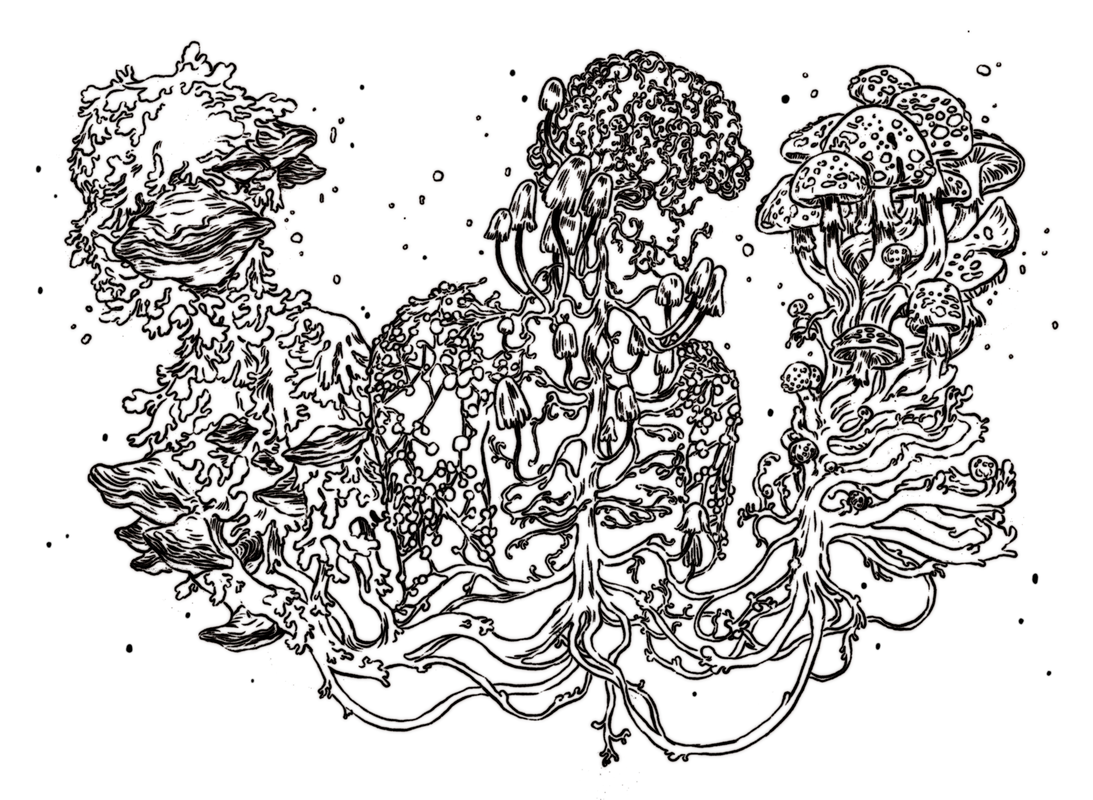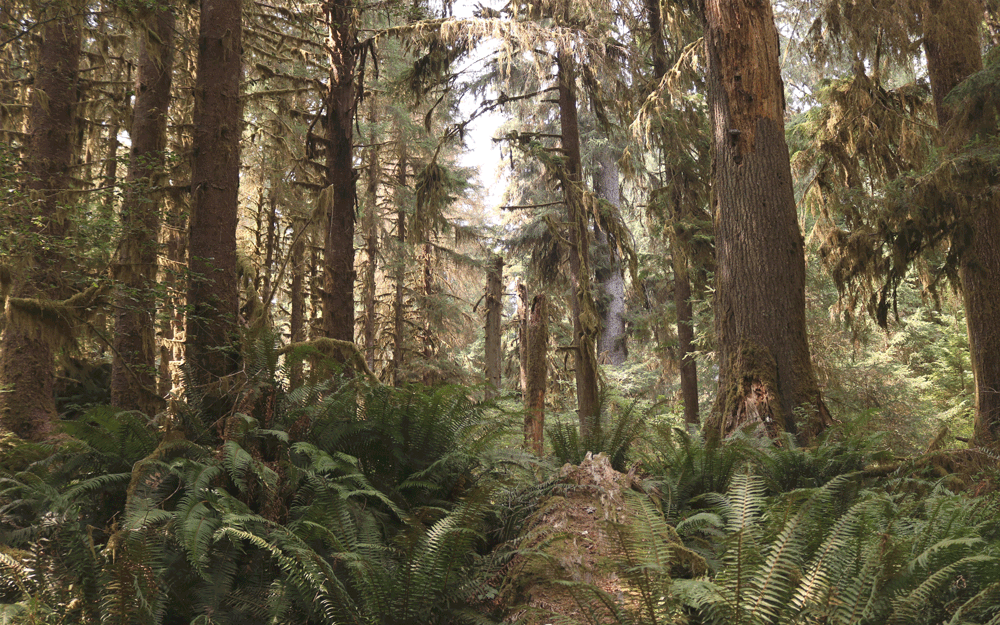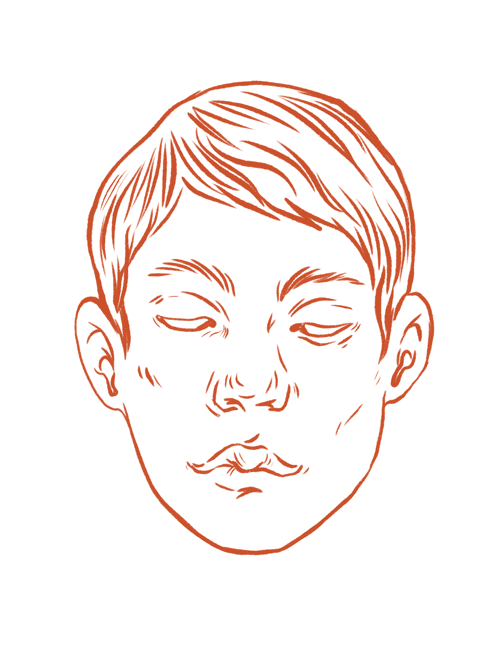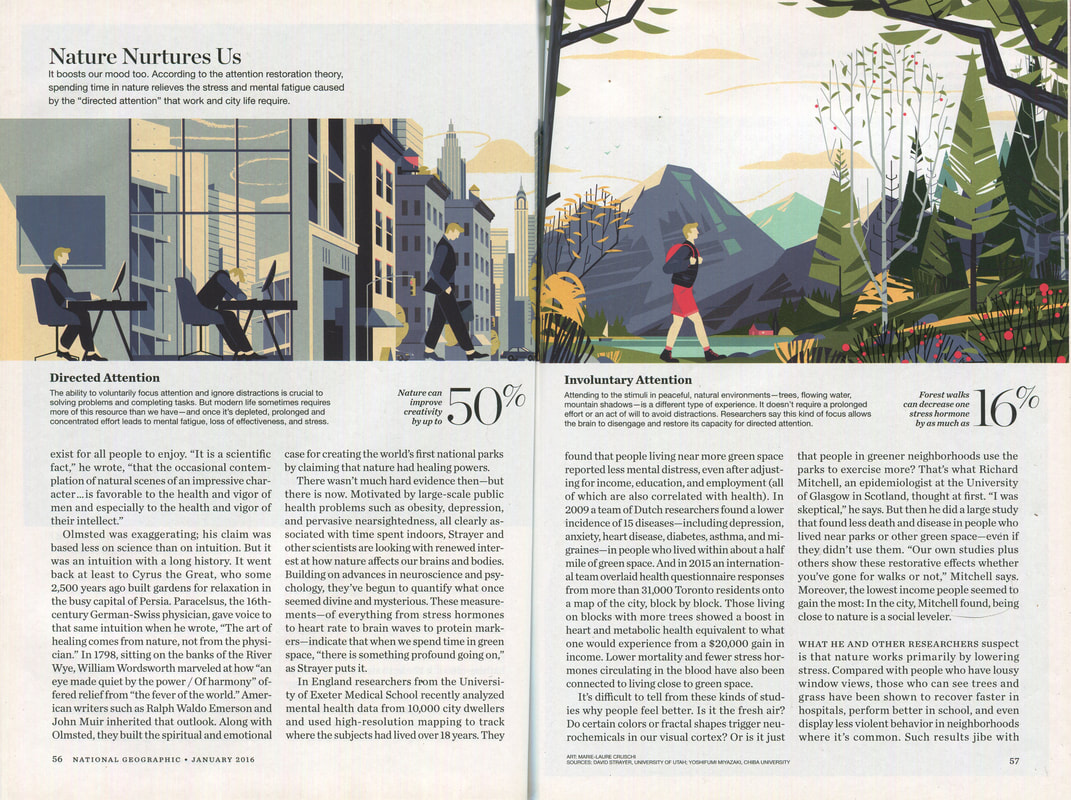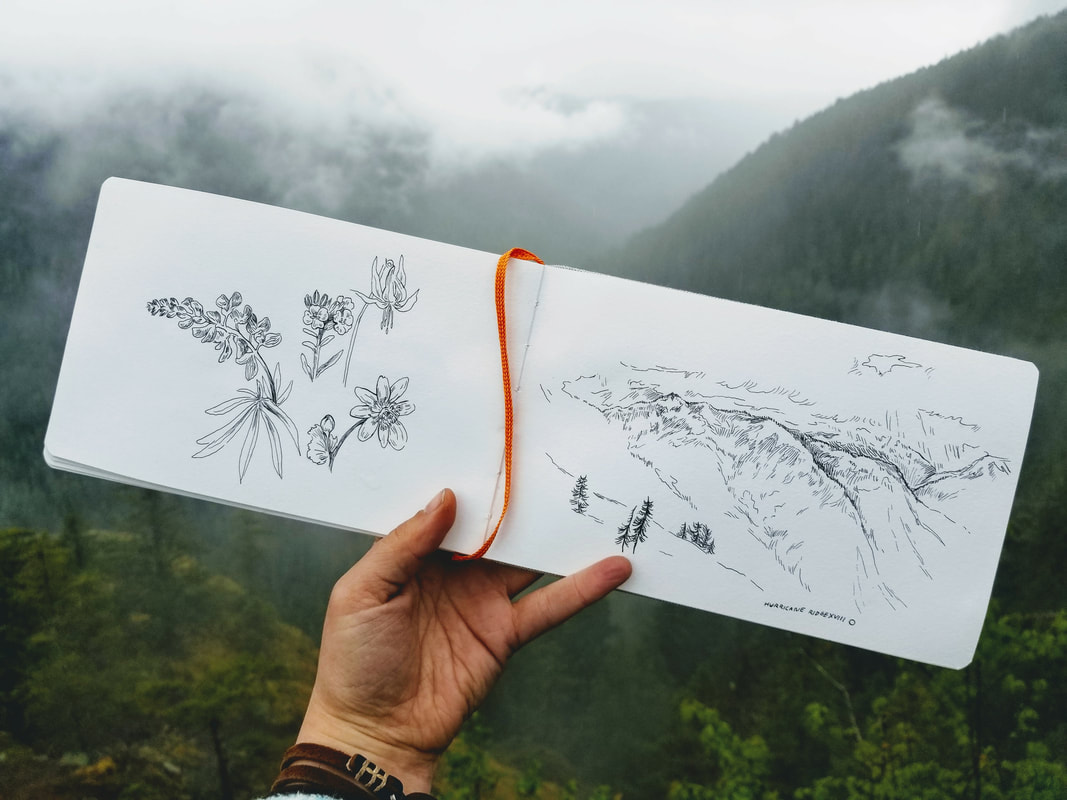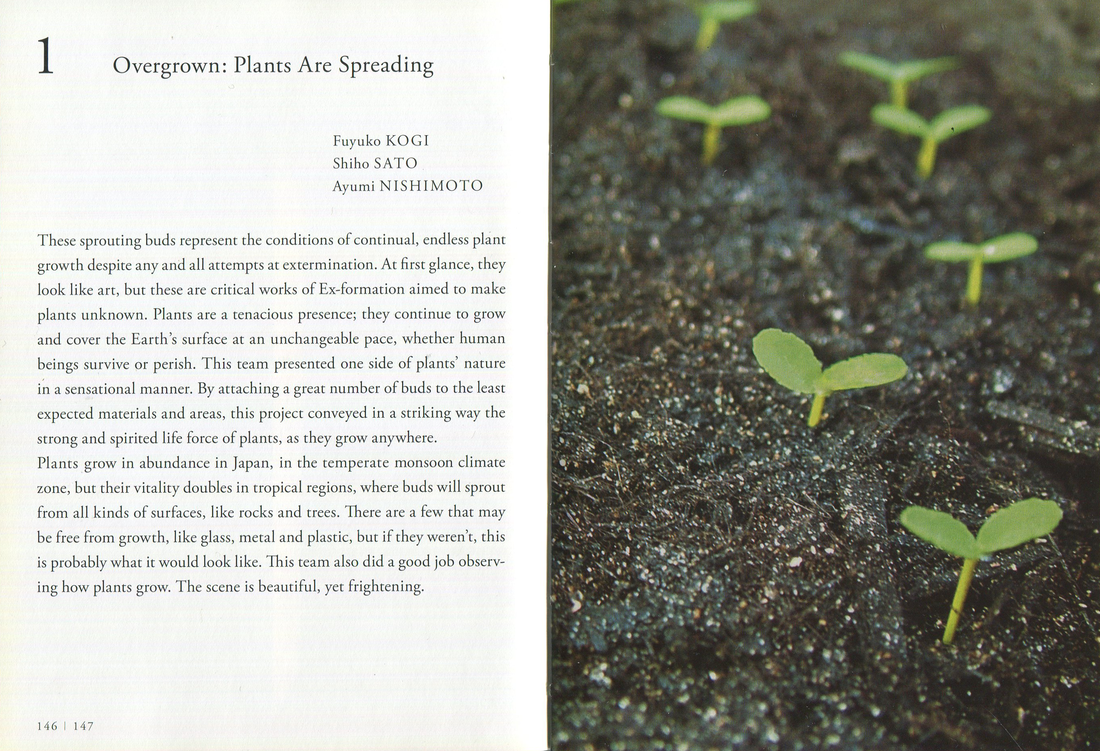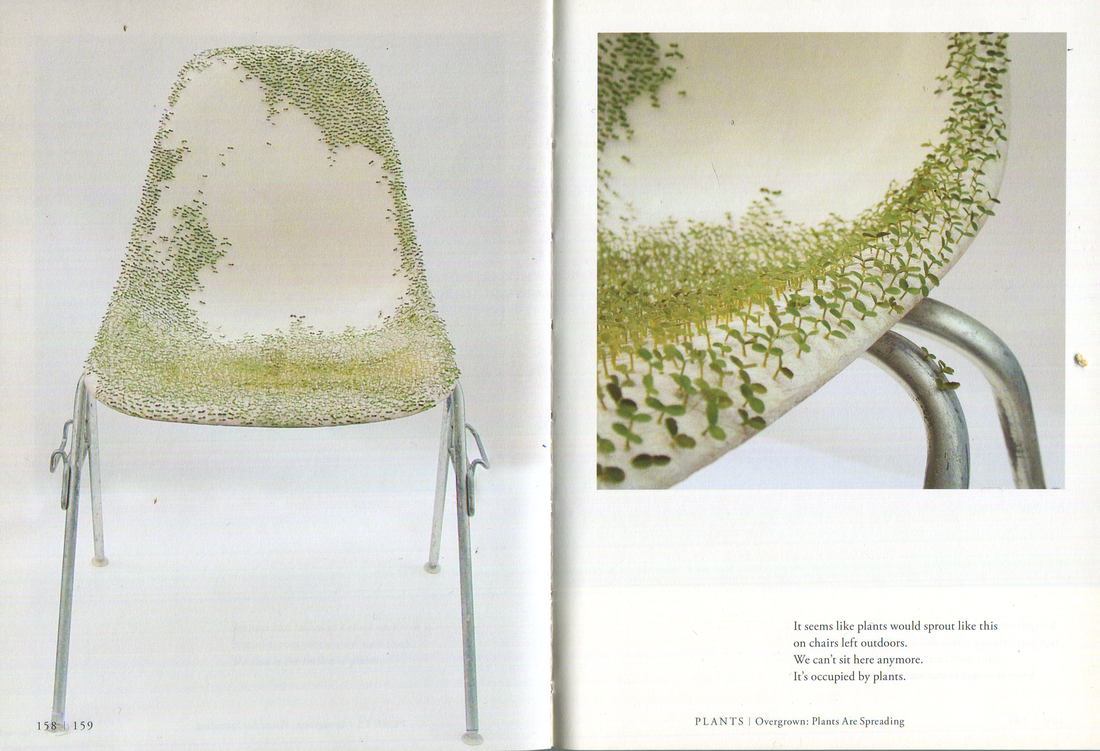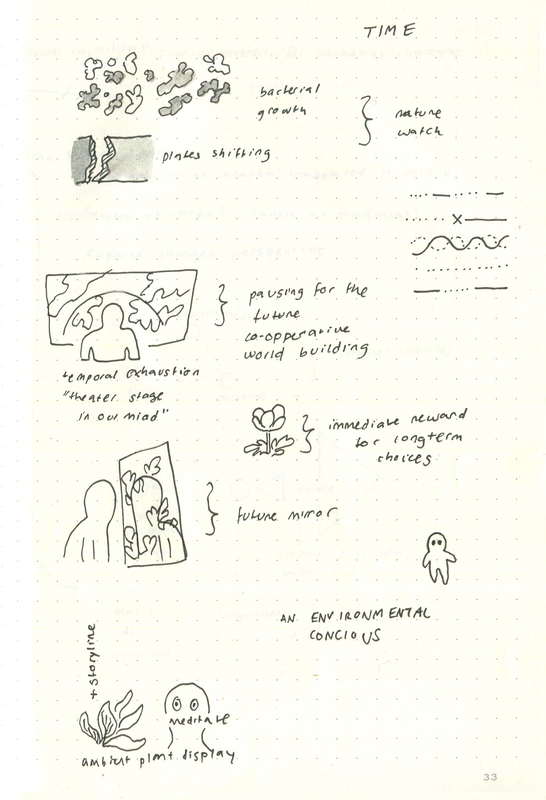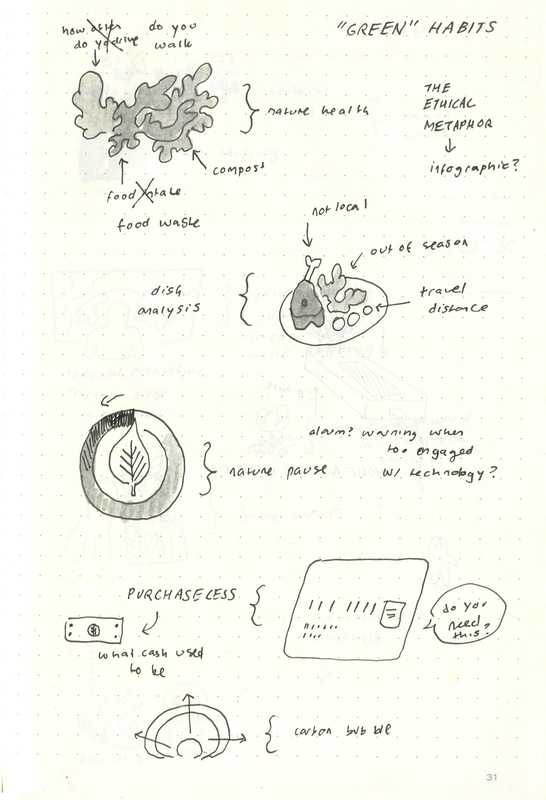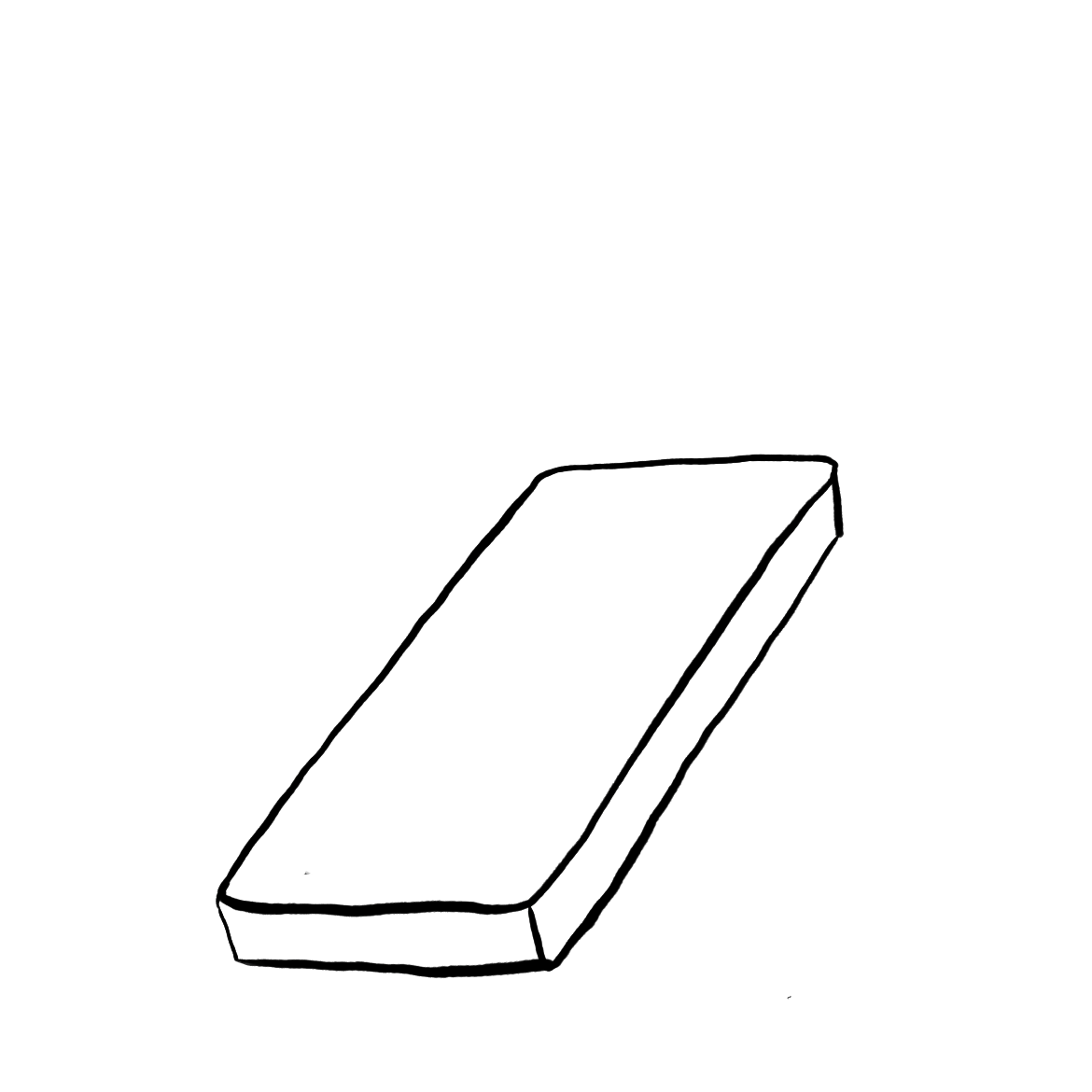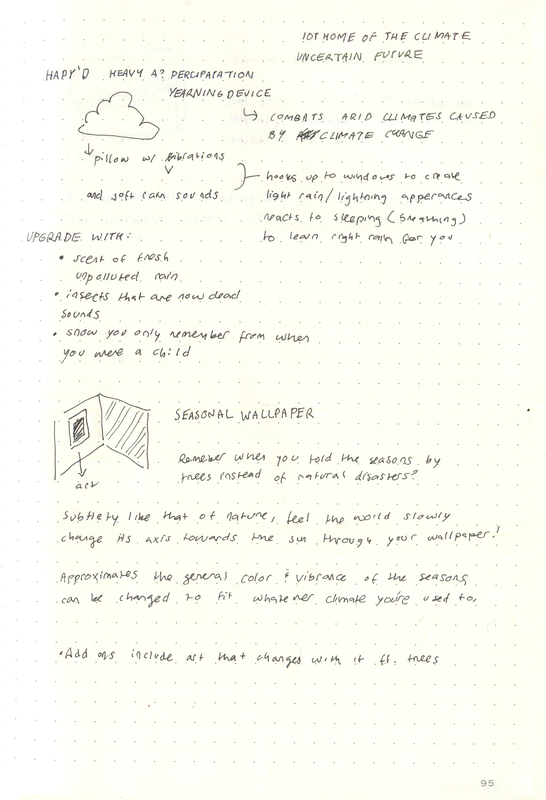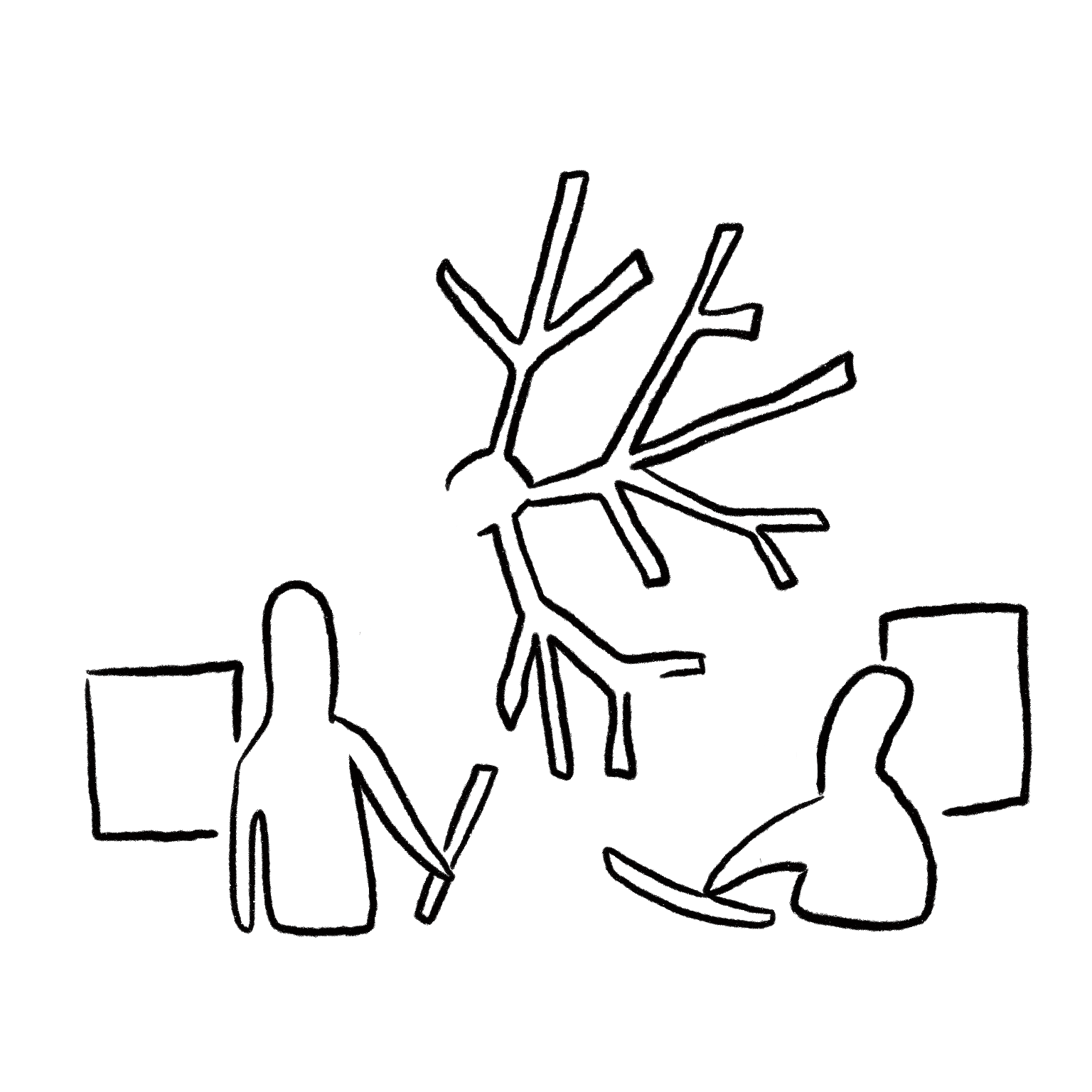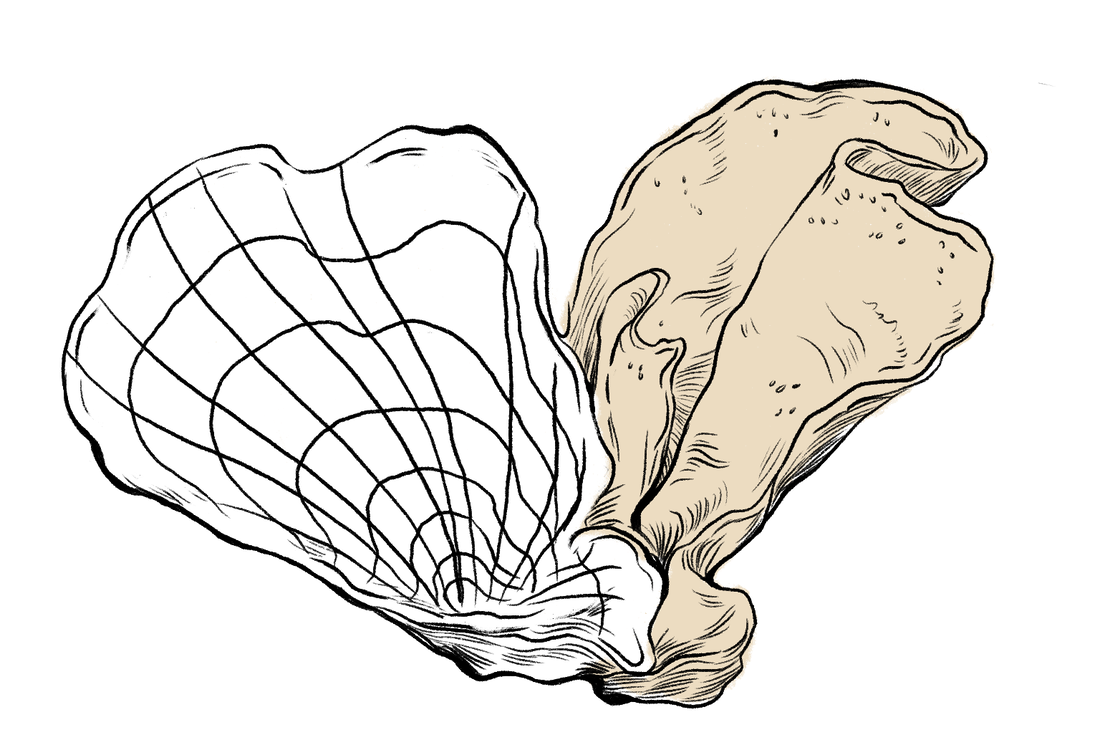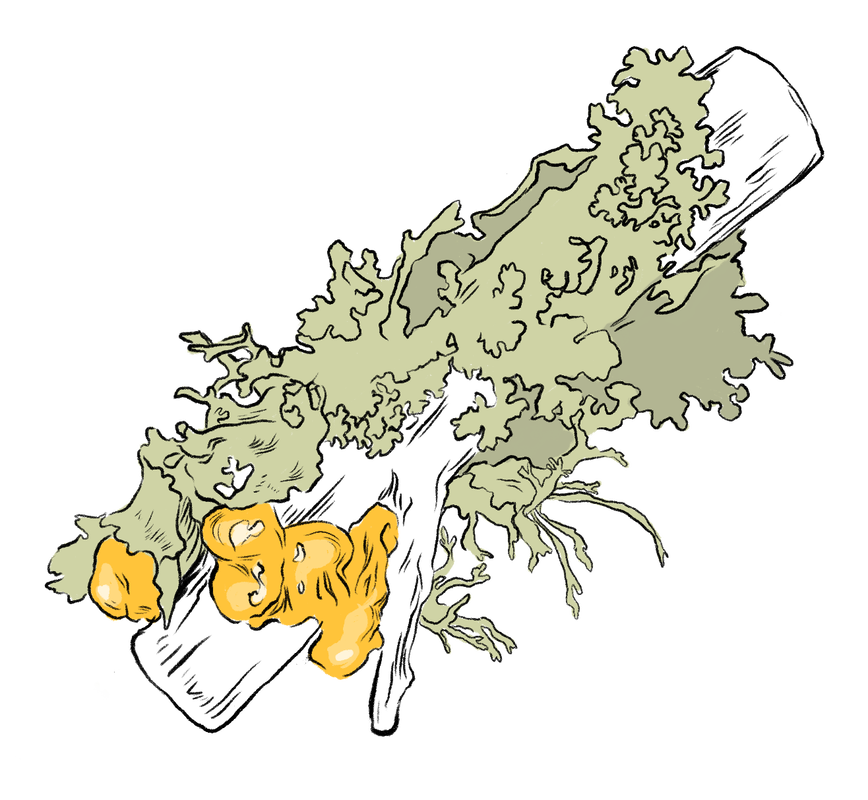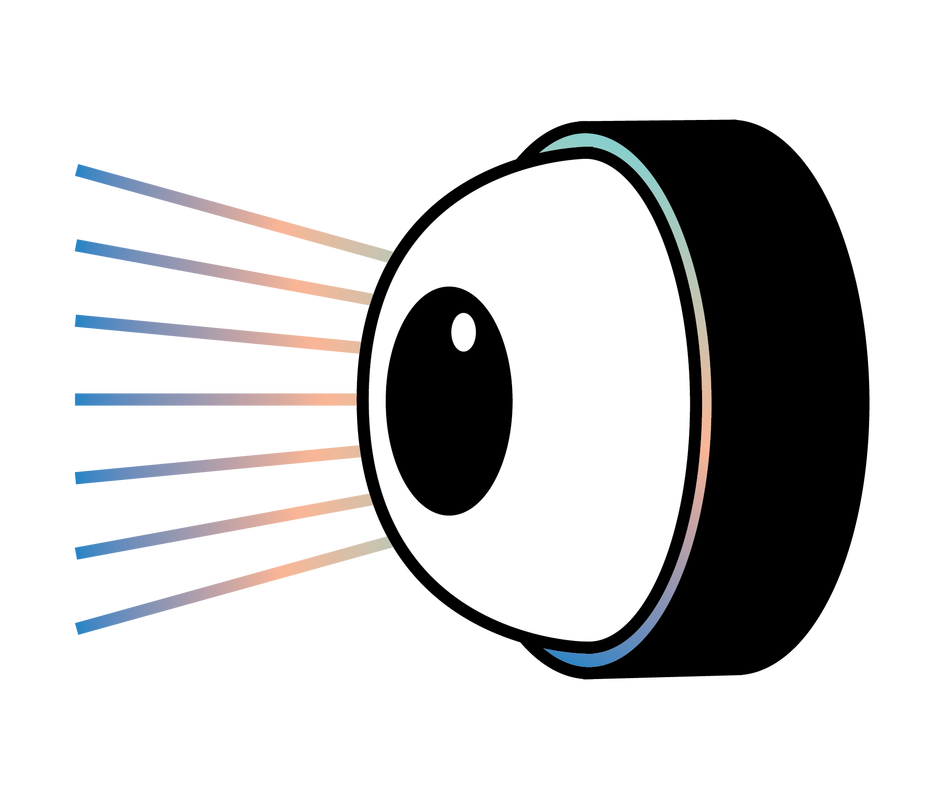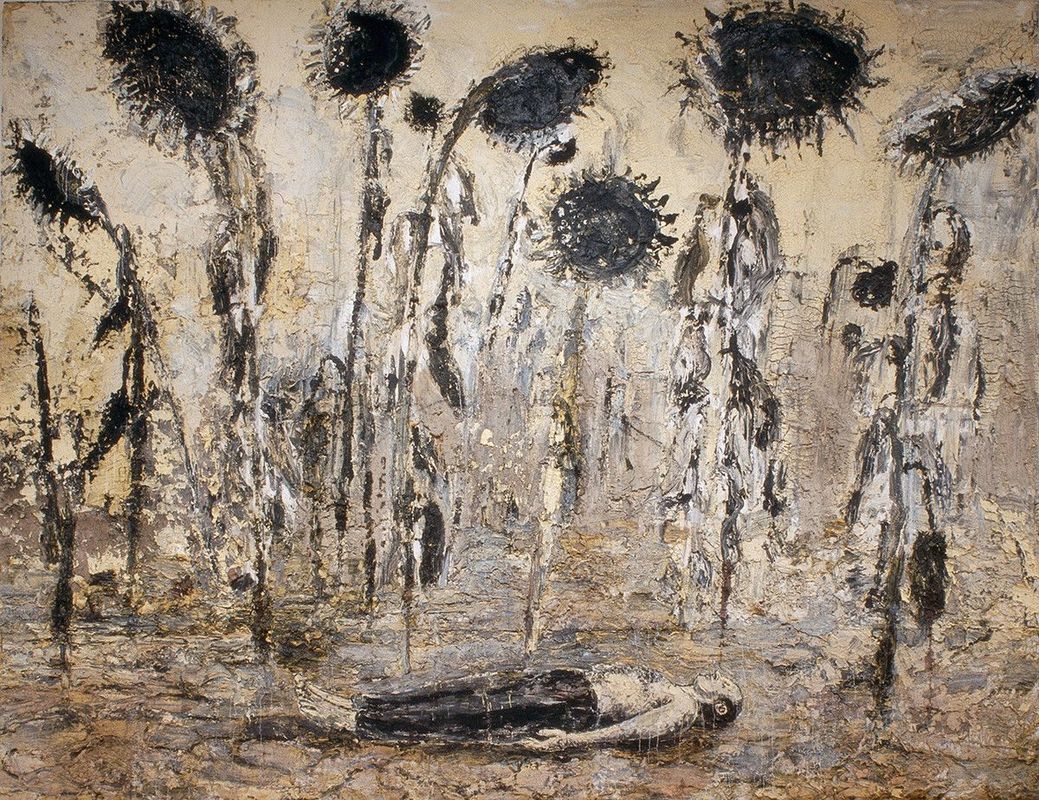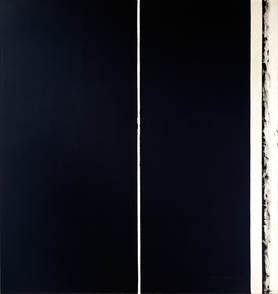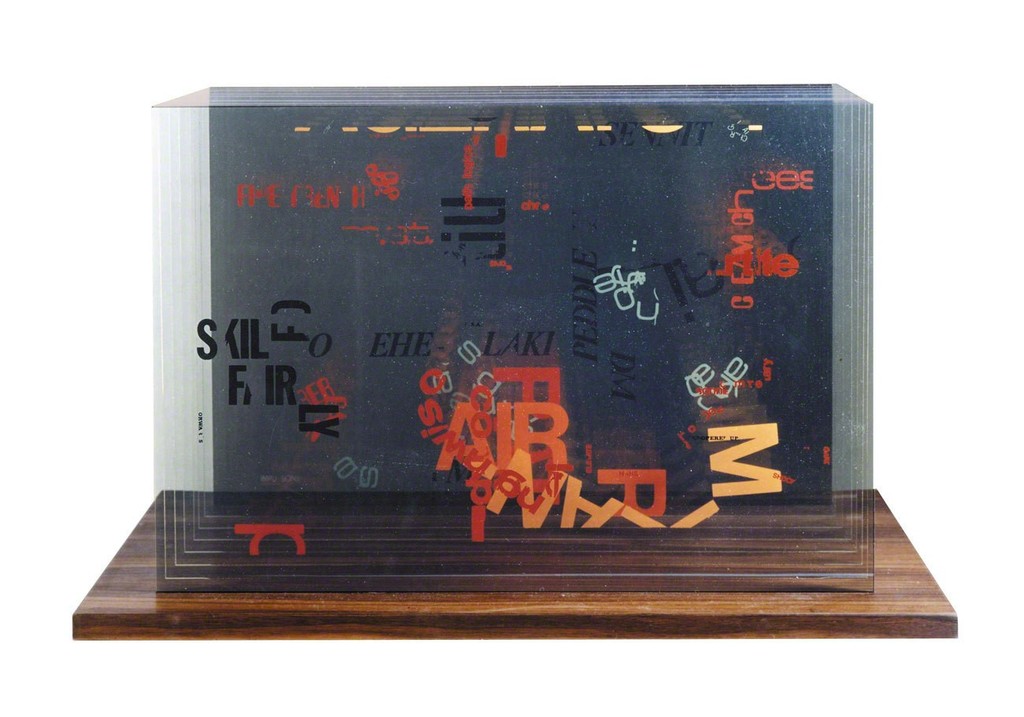|
"Entanglements is a magical realism portrayal of anthropomorphic creatures built of mycelium and the fruiting bodies of fungi. It’s inspired by the role of the mycorrhizal network in forests, which acts as a web between trees to provide nutrients as well as information, therefore supporting multiple species and building an architecture for a successful ecosystem. Donna Haraway captures this idea, and its challenge to capitalism’s Darwinian justifications, with the term “sym-poiesis” -- that organisms build worlds through making together.
The lessons of “sym-poiesis” resonate with current events, when issues such as the willful denial of systematic racism for economic benefit are being magnified by the pandemic. By valuing an arbitrary few over others our communities are weakened. The ecology of the forest illustrates an alternative -- strength depending on multiple worlds interconnecting, where beings are entangled together in fluctuations of growth and decay. Revealing to us ways to maintain resilience when a world values economic growth over bodies." Originally Published in the youarehere: the journal of creative geography's Bodies & Politics issue. “Skill in living, awareness of belonging to the world, delight in being part of the world, always tends to involve knowing our kinship as animals with animals. Darwin first gave that knowledge a scientific basis. And now, both poets and scientists are extending the rational aspect of our sense of relationship to creatures without nervous systems and to nonliving beings-our fellowship as creature with other creatures, things with other things.” Ursula K Le, Guin, Deep in Admiration “How can we repurpose the tools of modernity against the terrors of Progress to make visible the other worlds it has ignored and damaged? Living in a time planetary catastrophe thus begins with a practice at once humble and difficult: noticing the worlds around us.” Heather Swanson, Anna Tsing, Nils Bubandt, and Elaine Gan, Arts of Living on a Damaged Planet
We favor the moments that are fleeting. The sunset, the sunrise, even simple things like knowing we have only one onion to cook with, each slice becoming precious. We waste nothing when we can see how little is left. And it's sad and frustrating that we need that visual reminder to appreciate what we have. Otherwise we discard it, knowing there is another at hand. This is natural but disastrous when multiplied.
Knowing that it is the last versus something last longing, changes our perspectives and our appreciation. The sublime, as Kant describes it, is the fearful quality in the incomprehensible. It's a moment, the way it captures us in unknowingness, out of time. A moment when we cannot look away, or comprehend what is and what was. I want to prescribe this to design, to art. It is not a collectible. I don't want to create an immortal thing to be locked away for value, I'm far more interested in the moment when someone feels the sublime, even if it happens only once and then decays. But I struggle with knowing if this should be designed? Do we need a tool to appreciate temporality? Or is it design affecting culture in such a way that encourages us appreciate the infinite? Would this drive us insane? To constantly obsess over every passing second? Where is the line between helpful and frustrating? Is it still sublime if it's forced?
In design trust is the active discussion. The user should be able to trust us, and they need to be aware they trust us since there has been a sense of lost trust in technology what with sneaky dealings with data. But all this desire to create trust, through transparency and empathy and all the other magical solutions that research through design will show us, it still appears to me as manipulative. What is more treacherous than building a trust that is formulated in the an aim of what is will give us (the producer) a better standing.
Take for instance, safety in construction. Over and over safety is listed as the number one priority for workers. There are training videos, seminars, lectures. But safety to one individual can be vastly difference from another. Safety can mean sacrificing one risk for another, say standing under a precarious object to escape heat stroke on a hot day. These specific situations seem to be the moments of empathetic research design strives for. But when a company requires economic growth, and is tied up in liabilities to maintain a system, those individualistic reasonings become meaningless. Safety for the company over safety for the individual. Design for trust, but who are we trusting? Trust is meaningless without partnership, equal risk, and control. Because trust is representative of a gifted release of control. I trust you, and therefore I give myself up to you with a perceived notion you'll respond equally. Trust is a tool and therefore it can be corrupted and it can be designed for, but to design for a lack of abuse for trust you need to design equity, balance and most importantly the opportunity to regain control regardless of the stakes. "Their archaeological association provides an indication that these fossils have been collected by people for hundreds of thousands of years and, at times, attained a high degree of spiritual significance."
-Shepherds' crowns, fairy loaves and thunderstones: the mythology of fossil echinoids in England Kenneth J. McNamara Cave paintings, collecting rocks, etc. Human's have been shaping the world through their presence since prehistoric time. And through that creating history, leaving their mark through possessions and alteration of the environment. Perhaps that is an important part of consciousness, alteration. We change, therefore we are. And objects become representations of this. Despite the many arguments for letting go of material objects, it seems to be innately tied into our personalities. Perhaps physical objects are too specific, it could be collecting mementos, or creating impressions (carved names in nature). But in someway it seems to denote ownership. These things exist because they a frozen moments, embodiments of memories that manifest in the alluring feeling of nostalgia. Art has always been this, and I doubt it will ever not be, because it is successful in its attachment to individuals memories. Art that tries to be devoid of this is a paradox because it instead allows the audience to devote all of their memories on to it. The opposite, like popularized objects, become meaningless only to be nostalgic down the road once people can remember them as a frozen moment they shared with only those who existed in it (the 90s kid experience). Has data become nostalgic? Can it? Would this give it more meaning or the wrong meanings? And would this allow us to bond in community of research? Totems of perspective are in a manner tangible info-graphics there to allow us to understand the abstract, the past, or the future.
In John Cage's 4'33" the musical piece asked of the audience an appreciation for silence in music, and gave them time to acknowledge and analyze: "what's in a pause?" by elongating time.
In that silence what do you notice about context in listening to music, especially in a setting such as an auditorium that requires the active participation of listening. “Silence is not acoustic. It is a change of mind, a turning around,” John Cage It seems to me that it isn't a change of mind, but rather silence is a change in time. In silence, the only way to understanding it is through time. Robert Rauschenberg, who worked intimately with Cage, paralleled these ideas in his series of White Paintings. The audience in a museum are active viewers and in the context of a museum they are "forced" to view this whiteness, not as the space between paintings, but the painting itself. I feel it important to acknowledge that I do not believe whiteness is synonymous with silence, and that there is an argument to be made about why whiteness is the start of painting/drawing in the western world. But in a return to the White Painting, Rauschenberg is calling towards the acknowledgement of the context of viewing art, the light that affects the surface, and the dust, the shadows of other viewers. In that manner he is saying white isn't silence, or absence but rather a space to acknowledge subtleties. "Silence, similarly, is relational rather than absolute" Susan Sontag “The art of our time is noisy with appeals for silence. A coquettish, even cheerful nihilism. One recognizes the imperative of silence, but goes on speaking anyway. Discovering that one has nothing to say, one seeks a way to say that.” Aesthetic of Silence And I have to point out that although these ideas are often met with mockery, they, these artists, acknowledge their own banality. But it is that acknowledgment they are intending to highlight in their own work. The audience must acknowledge themselves in the way they actively participate with art. And in this way they have built on Duchamp's Toilet's pointed critque of the museum as a decider of "what is art". One might argue that art is active viewership, the motivation of an audience, and that context can manifest this, but is not necessary. And pausing is in its own way an active experience. So mirrored in the inability to be completely silent for 5'44". It is not in our nature to be quiet. Turning to design, a place that often works to destroy pauses, or to erase the dust, shadows, and light that appear in pauses, how might these ideas ripple into addictive design? Or design that intrudes into our daily pauses? When we discuss the needs of the user, are we prescribing activeness or "productivity" (an action I've come to greatly dislike). And if we are truly considering the needs rather than simply the wants, how are we considering the need to pause? Or is that too forceful. Current studies are showing how truly detrimental a lack of eight hours of sleep can be. But places like the United States admire the lack of sleep (return to commentary on productivity). And phones, apps, conversations are designed(1) to prove our business. Our dedication to work. Is this serving the wants of the needs of the user? Trends often show themselves as unethical... (Philosophy of Technology) Details, and subtlety, can be an encouragement for silence. They create active focus on nothingness. The call for a paradigm "Art, itself a form of mystification, endures a succession of crises of demystification; older artistic goals are assailed and, ostensibly, replaced; outworn maps of consciousness are redrawn." Susan Sontag (S.S.) Instagram: "by silence, she(he) frees himself from servile bondage to the world, which appears as patron, client, consumer, antagonist, arbiter, and distorter of his work." S.S. In my desire for a lack of servile bondage I have taken a break from instagram, however short lived it might be, so I can create without a distortion which in reality could be quite beneficial (productivity). "the gesture of silence in abdication from society is still “a highly social gesture." S.S. "Modern art’s chronic habit of displeasing, provoking, or frustrating its audience can be regarded as a limited, vicarious participation in the ideal of silence which has been elevated as a major standard of “seriousness” in contemporary aesthetics." S.S. "There is no neutral surface, no neutral discourse, no neutral theme, no neutral form. Something is neutral only with respect to something else — like an intention or an expectation." S.S These two quotes begin to resonate with ideas of design research as a critical expression (speculative design). "If only because the artwork exists in a world furnished with many other things, the artist who creates silence or emptiness must produce something dialectical: a full void, an enriching emptiness, a resonating or eloquent silence." - Sontag How might that work in interaction design? Is it turning off the phone. Is it destroying it with a baseball bat? Should the designer be handing you a the bat? The theory of context...and how designers use silence for hierarchy and trickery. Good and bad design? Moral and immoral? In a world altered by definitions by technology, how can morality of a thing be judged when that thing is creating new definitions of morality? Special Relativity, we are moving at faster speeds and therefore we must reevaluate the speed of things from our faster speed (convoluted). Designers, the ultimate hypocrites. "Art is a technique for focusing attention, for teaching skills of attention… Once the artist’s task seemed to be simply that of opening up new areas and objects of attention. That task is still acknowledged, but it has become problematic. The very faculty of attention has come into question, and been subjected to more rigorous standards…" S.S. Today's art (and deisgn) must be aggressive in order to elicit response thus solidifying is being as art. In a world full of art, "true" art must be louder, losing its chance to be silent. And loudness is best expressed through multiples. “The impulse to create begins… in a tunnel of silence,” How can people be creative, if we tell them silence isn't creative. I remember being a young child, I think my creativity came in a battle towards boredom. My boredom, which in many ways was self-created from my displeasure with others and impatience, was filled with creation. I'm not sure if I have evidence that creativity needs boredom, but I think we would be wrong to assume it is only a negative. Another fucking paradigm shift, this time of pain points. (Paradigms are a pain point for me) "perhaps a huge silence might interrupt this sadness of never understanding ourselves and of threatening ourselves with death. Perhaps the earth can teach us as when everything seems dead and later proves to be alive." Neruda References: https://www.brainpickings.org/2014/10/30/pablo-neruda-childhood-and-poetry/ https://www.brainpickings.org/2014/05/27/lynne-tillman-john-cage/ 1. the action of meaning |
